Finding Low-Cost Dental Care for Low-Income Families: Your Guide to Affordable Oral Health Solutions

Oral health is a critical aspect of overall well-being, yet it often takes a backseat when families struggle with financial challenges. For low-income families, the cost of dental care can be a significant barrier to maintaining healthy teeth and gums. From routine checkups and cleanings to necessary procedures like fillings and extractions, the price tag attached to dental care can be overwhelming. However, there are resources and options available to help families access the care they need without breaking the bank.
In this guide, we will explore various low-cost dental care options, including government programs, community health centers, dental schools, and nonprofit organizations. By understanding where to find affordable dental services and how to navigate the available options, low-income families can take proactive steps toward better oral health.
Why Dental Care is Essential for Low-Income Families
Dental health is more than just having a bright smile. Poor oral hygiene and untreated dental problems can lead to serious health complications, such as gum disease, infections, tooth loss, and even chronic conditions like diabetes and heart disease. For families living on a tight budget, dental care may seem like an unnecessary expense, but ignoring it can result in costly and painful problems down the road.
Low-income families, in particular, are at higher risk of dental issues due to limited access to dental insurance, lack of knowledge about oral hygiene, and inadequate access to preventive care. The good news is that there are programs and services that specifically aim to make dental care more accessible and affordable for those in need.
1. Government Programs for Affordable Dental Care
Several government-funded programs exist to provide dental care for low-income families. These programs are typically aimed at children, seniors, and individuals with disabilities, but some services extend to adults and families as well.
Medicaid and CHIP
Medicaid is a federal and state program that provides health coverage for low-income individuals and families, including dental care for children. Under the Children’s Health Insurance Program (CHIP), dental care is often included as a benefit for children, which can cover preventive services, fillings, and even emergency dental procedures.
For adults, Medicaid’s dental coverage varies by state. While some states provide comprehensive dental care, others offer limited coverage or none at all. It’s important to check with your state’s Medicaid office to see what dental services are available to you and your family. Some states have expanded Medicaid to include adult dental services, especially for those with low income or disabilities.
Medicare
Medicare generally does not cover routine dental care, but it may cover dental services related to medical conditions or surgeries, such as jaw reconstruction or hospitalization for dental treatments. For more comprehensive dental coverage, those eligible for Medicare may need to look into supplemental plans or private dental insurance.
State and Local Health Departments
Many states and local health departments operate dental clinics that provide free or low-cost dental care to low-income families. These clinics are often staffed by licensed dentists, dental hygienists, and dental students who experienced professionals supervise. They may offer a wide range of dental services, including exams, cleanings, extractions, and some restorative procedures. You can contact your local health department or search online for programs offered in your area.
2. Community Health Centers and Free Clinics
Federally Qualified Health Centers (FQHCs) and free or sliding-scale dental clinics are an excellent resource for low-income families who may not have access to traditional dental care providers. These centers are funded by the government to provide comprehensive health care services, including dental care, to underserved communities at a reduced cost based on income.
Federally Qualified Health Centers (FQHCs)
FQHCs are located in areas that lack sufficient access to dental care, often in low-income neighborhoods. These centers offer dental services that include preventive care, such as exams and cleanings, as well as more advanced procedures, such as fillings, extractions, and dentures. FQHCs typically charge based on a sliding fee scale, which means that patients pay a lower rate if they have a lower income.
To find an FQHC near you, you can visit the HRSA Find a Health Center website and search by location. Many centers also offer services for uninsured individuals or those with limited insurance coverage.
Free or Low-Cost Dental Clinics
Some nonprofit organizations and dental societies operate free dental clinics for low-income individuals and families. These clinics often offer services on a first-come, first-served basis, and they may be available on a specific day or during special events like Give Kids A Smile Day or Mission of Mercy events. These events are typically organized to provide free care to underserved communities and may include services like dental cleanings, exams, extractions, and even restorative care like fillings.
Local churches, schools, or community centers may also periodically host free dental clinics. Check with your local community organizations or do an online search for free dental care events in your area.
3. Dental Schools: A Low-Cost Alternative
Dental schools are another great resource for low-income families in need of affordable dental care. Dental schools offer reduced-cost dental services because the work is performed by dental students under the supervision of licensed instructors.
How Dental Schools Work
At dental schools, students in their final years of education perform dental procedures as part of their training. These students are closely supervised by experienced faculty members to ensure that the care provided is safe and effective. While dental school clinics typically charge lower fees than private practices, the quality of care is high, and the procedures are done with the latest technology and techniques.
Common services offered at dental schools include cleanings, exams, fillings, and extractions. However, the wait time for appointments may be longer than at a regular dental office, as students are still learning and may need more time to complete procedures.
To find dental schools in your area, you can check with your local dental association or search online for accredited dental programs. Many schools have specific clinics open to the public, and some even offer financial assistance for low-income patients.
4. Nonprofit Organizations and Charitable Programs
Numerous nonprofit organizations work to provide affordable dental care to low-income families. These organizations may operate dental clinics or provide funding for dental services through grants or partnerships with local dentists.
Donated Dental Services (DDS)
One prominent program is the Donated Dental Services (DDS) program, which provides free dental care to low-income individuals who are elderly, disabled, or medically compromised. The program is run by the National Foundation of Dentistry for the Handicapped and works with volunteer dentists and dental labs to offer services like exams, cleanings, and restorative treatments at no cost.
Eligibility for DDS typically includes financial need, age, or disability, and you can apply through your state’s DDS program. If you qualify, you may receive services ranging from basic cleanings to more complex dental treatments, depending on your needs.
Smiles Change Lives
Another nonprofit organization, Smiles Change Lives, provides affordable orthodontic care for children from low-income families. The program offers reduced-cost braces to eligible children and aims to improve self-esteem and quality of life by providing access to dental care that families would not otherwise be able to afford.
5. Low-Cost Dental Insurance Plans
While many low-income families may not be able to afford traditional dental insurance, there are low-cost dental insurance plans designed for people on tight budgets. These plans may cover preventive care, like cleanings and exams, as well as a portion of the cost for procedures like fillings and crowns.
Some state health insurance exchanges offer dental coverage as an optional add-on to health plans. Additionally, some dental insurance companies offer reduced-cost or budget-friendly plans that provide a set number of visits per year or cover a portion of treatment costs. It’s important to shop around and compare dental insurance plans to find one that fits your family’s needs and budget.
6. Payment Plans and Financing Options
For families who cannot afford to pay for dental care upfront, many dental offices offer payment plans or financing options. These plans allow you to break up the cost of dental treatments into smaller, more manageable payments over time. Some dental practices also partner with third-party financing companies, like CareCredit, which offer low-interest or interest-free loans for dental treatments.
These payment options can help families access necessary dental care without having to wait until they can afford to pay the full amount.
Conclusion
Accessing dental care when you’re on a tight budget can be challenging, but there are plenty of resources available for low-income families. Whether through government programs, community health centers, dental schools, nonprofit organizations, or low-cost insurance plans, families don’t have to compromise on their oral health due to financial constraints.
By researching your options and seeking out the services available in your community, you can find affordable dental care that meets your family’s needs. Oral health is a critical part of overall well-being, and taking steps to address it today can lead to a healthier, brighter future for you and your loved ones.
Save Money on Your Wireless Phone Service
If you qualify for certain government benefits, you may also be eligible for Lifeline. Lifeline is a government program that help low-income consumers receive free or heavily discounted communication services.
Click here to find out more and apply for this valuable benefit.
Offer subject to change.



